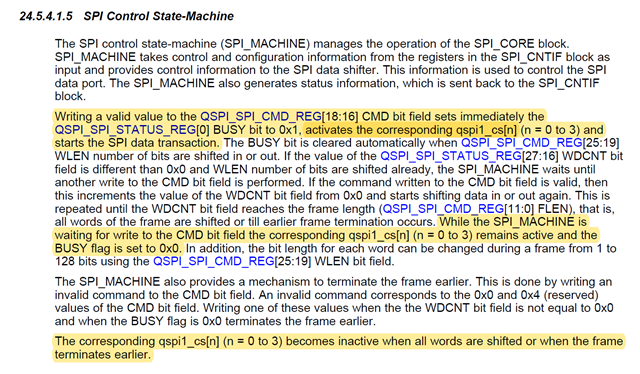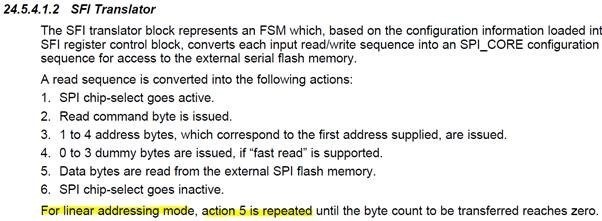Dear Champs,
My customer is using QSPI to connect to FPGA in AM5728 and they need to communicate with FPGA through QSPI using below timing.
As I understand, configuration mode should be used to communicate with FPGA through QSPI, right?
Is there any example to QSPI transfer in configuration mode?
If not, is it OK just to set to '0' in the MMPT_S bit of QSPI_SPI_SWITCH_REG ?
Their SW SDK is Processor Linux SDK v6.3.0 and they will access QSPI in the DSP. So, they need an QSPI configuration mode example working on C66x DSP.

Thanks and Best Regards,
SI.










